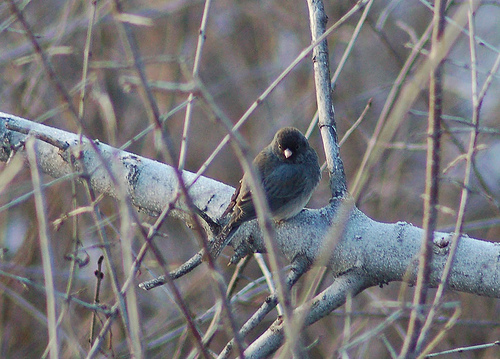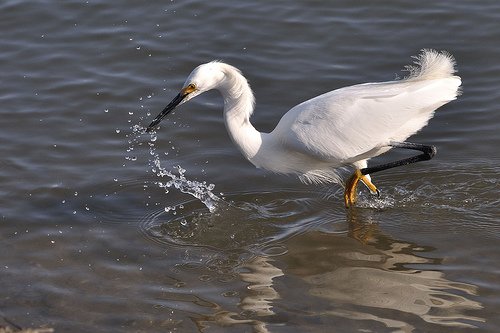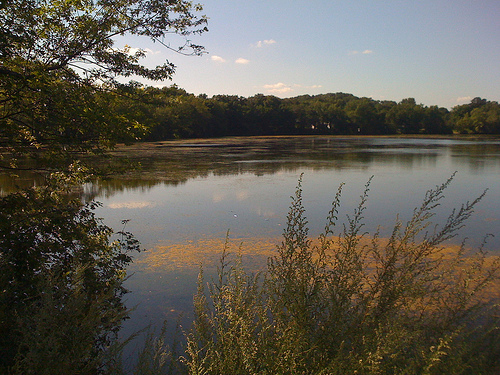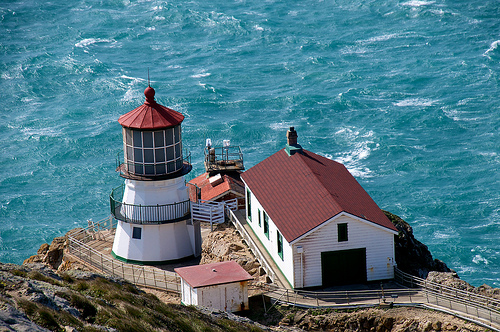Here are more stories from the wonderful thread from birders on MASSBIRD:
Jean’s sister got her started in birding:
My spark wasn’t a bird but a person-my sister who still lives in Rochester, NY. She had begun birdwatching and would tell me about it over the phone. I went back to visit in February, 1985. We went for a walk in Mendon Ponds Park. For a quarter you could buy a handful of black oil sunflower seeds at the visitor center. She took me down this path and we stood quietly with our mittened hands outstretched. We could hear the birds calling around us and within a short time the little tuxedo dressed bird landed on my hand. I’ll never forget how light the Black-capped Chickadee was and how amazing it felt to have this creature in hand. I came home, put up first one feeder and then another, and began to keep track of birds I saw in the yard.
It wasn’t until 1997 that I began to pursue this interest more and began keeping a “Life List” although I had bought a book from Cornell to keep my first sightings in. I had joined Audubon, Mass Audubon, The Nature Conservancy, Brookline Bird Club earlier. My first field guide was the Petersen Guide to Birds. I took a Shorebirds workshop with Wayne Peterson and my first trip to Plum Island was with Rick Heil. Bill Drummond took me (and sometimes Ed) over the years to places I thought I would never visit. The interest grew into a passion, one my friends still doesn’t understand but rather humors me.
Jean loves the first Dark-eyed Junco of the year. photo by dobak
When I retired from teaching I was sure that I would bird everyday and never miss a rarity again but that has not proved to be true. Life still intervenes. Well I do watch my feeders everyday and still keep a list of birds I see there. It delights me when the first Dark-eyed Junco appears in the yard mid-October and the various species bring their young to the feeders. My passion has led to a substantial book collection, many wonderful memories of places seen, people met, and making my yard bird/animal friendly. One regret is that I wish I were younger when I was hooked but I hope I have many years left to pursue this wonderful experience called birding.
While neither son has become a birder per se, I do get calls wanting to know what bird it is that they are looking at. We were basically living in the Mt. Washington Valley these past four years taking care of our granddaughter. Often I would have my granddaughter(s) call out to me when birds were at the feeders, so perhaps there is an ember waiting to be fanned. I hope so-after all I have all these books…
Ann describes two sparks and expresses gratitude for others who have helped along the way:
The first time I saw a Snowy Egret lift its “golden slippered” foot.
Ann’s first spark with a Snowy Egret “lifting its golden-slippered foot.” photo by donjd2
Being alone watching a Great Blue Heron standing by a river and seeing the heron extend its neck straight up and raise its wings – wondering what that behavior meant – what was the bird seeing, hearing, sensing that I was not.
There has been a noticeable thread of gratitude in these messages – people expressing gratitude to their birding friends and mentors and for the wonders of nature. My “spark” event that evokes gratitude was becoming a volunteer at the Mass Audubon Joppa Flats Sanctuary 13 years ago. I’m grateful to Sanctuary Director Bill Gette for being a mentor, friend, and role model and encouraging me to grow as a person and a birder. I’m also grateful to the Joppa Flats staff and volunteers for many wonderful and memorable experiences and for the gift of community. My life is so much richer from being part of that group.
Many thanks, also, to Barbara Volkle for this Massbird forum – I have learned a lot here and seen many wonderful birds as a result of others postings. Barbara, you moderate the group with patience and diplomacy.
John, like many, had a number of sparks that turned him into a serious birder:
My spark came in about four stages. The first came when I was growing up in North Carolina. I had good hearing, unlike today, and was doing a lot of music. I could hear the music of birdsong and enjoyed it, especially the Bob-white, which I thought was nice and would dearly love to hear it again, now that I am in New England and they are much less common here today, than back in the 50s in NC.
The second stage came in 1963 when I traveled across the country with a friend when we were both on our way to school out west. He was an avid birder and insisted on driving the whole way, a trip of 3 or 4 days, during which we camped each night. He would immediately stop the car for a Lesser prairie chicken or a hawk overhead. As he drove, I paged through his Peterson guide and asked him about each bird that caught my interest, and he knew a great deal. I was impressed with his passion and knowledge, and always thereafter considered myself to be a birder. I had no idea how intense it could be.
One summer only a few years later, I was camping with my parents and sisters in the Great Smoky Mountain National Park and I kept hearing such a beautiful sweet song that I had to find the singer, which proved to be a three-day effort, hearing it each day and only at great length being able to get a good look at the bird. It was a Wood thrush, and since that day its song is burned into my memory, as it is for many who consider it their most favorite bird song.
Walks at Arlington Reservoir helped spark John’s birding. photo by towodo
The fourth stage came when I retired in 2003 and at the same time had a minor surgery that required me for six weeks to avoid my habit of running. I live near the Arlington Reservoir and what a great place to be if you are forced to walk each day! I took my small binocs and walked there, discovering how little I really knew about birds, and how much fun it was to find out more. I joined the newly formed Menotomy Bird Club and began to learn more quickly about birds and the great people who admire them. I can recall leafing through the field guide looking for a very mallard-like duck with a PURPLE head, which turned out to be just a mallard in different sunlight so the green head looked purple – I’m sure many have seen that illusion. Also very impressive were the Great blue herons there. Then the spring migration, and I’ve been solidly hooked ever since.
Another real boost, not to say a spark, has come from the marvelous experience I have had with recent years of bird banding with Trevor Lloyd-Evans at Manomet. Many on this list can attest to the extremely broad influence of his hospitality and the deep insight that comes from handling birds up close and learning season by season more about their lives and habits.
Henry is thankful for fresh air birding and helpful mentors:
My family and I went to Kenya in 1996 to visit my brother-in-law, a zoologist living outside Nairobi. He took us up north to the edge of the Rift Valley. It was vast; it was stunning; it was like the whole earth was spread out in front of us.
A week or so later I was home, in a claustrophobic cubicle office in Brookline, feeling like I was going out of my mind. A friend saw that I was down in the dumps and made a simple suggestion, ”Why don’t you try bird watching? You have to be outside to do it.”
I am grateful to that friend (Mark Aronson, a fine birder from New Haven). I am grateful for all the kind birders who are so patient with me, because bird watching is very challenging and I’m always asking for help. And I am especially grateful for the people who maintain and preserve places like Plum Island and Mount Auburn Cemetery.
California birds hooked David:
Always a nature lover it took me a while to get beyond feeding mallards on childhood vacations. But in high school I worked in western Pennsylvania weeding and planting in a lovely nursery for Elton and Verna, a retired school teacher couple who taught me much about plants.. wild ones, and cultivated.. but I distinctly remember one day planting out some shrubs, and Elton looking up into the tops of the trees to see the Baltimore Oriole he heard. I knew they were orange, nothing else, we did not see the bird, but Idid hear it, and was startled at the concept that one could look for a bird because you recognized its song – amazing.
The birds and birders of Point Reyes, CA help hook David. photo by donjd2
Fast forward a few years.. a summer working in a lab in Panama.. amazing birds.. amazing colors, amazing calls, and someone showed me a Toucan!! But I had no binocs, or bird books.. and hadn’t a clue what I saw for the most part. Fast forward another couple years.. and I am a resident physician in San Francisco.. birds everywhere, not just hiding in trees.all over the beaches, lagoons, flocks filling the air at times.. some just ridiculous to look at.. flocks of pelicans looking like pterodactyls, odd little quail with feathers popping out of their heads, ducks who looked like Picasso designed their heads.. and there was this place called the Point Reyes bird observatory.. on a spectacular piece of Northern California..they had people who led walks.. where I saw hundreds, thousands of shorebirds.. and was with people who knew what we were looking at and where to look.. who taught.. I was hooked. I moved back East 20+ years ago to western mass, and told to call a lovely woman named Sally Venman. She said there was this club called Hampshire Bird Club with walks and meetings practically in my back yard. Wow, what a resource.
Initial Post Responses: Part 1 Part 2 Part 3 Part 4 Part 5 Part 6
Discover more from Vermont Birder
Subscribe to get the latest posts sent to your email.





Pingback: What Sparked My Interest in Birding – Part 10
Pingback: What Sparked My Interest in Birding – Part 11
Pingback: What Sparked My Interest in Birding – Part 12
Pingback: What Sparked My Interest in Birding – Part 13
Pingback: What Sparked My Interest in Birding – Part 14